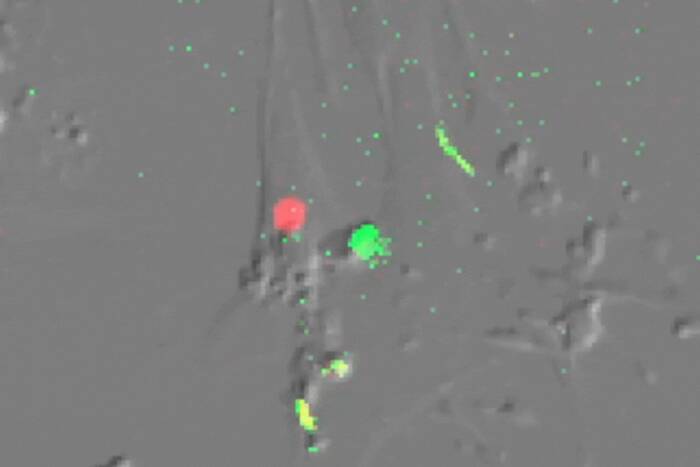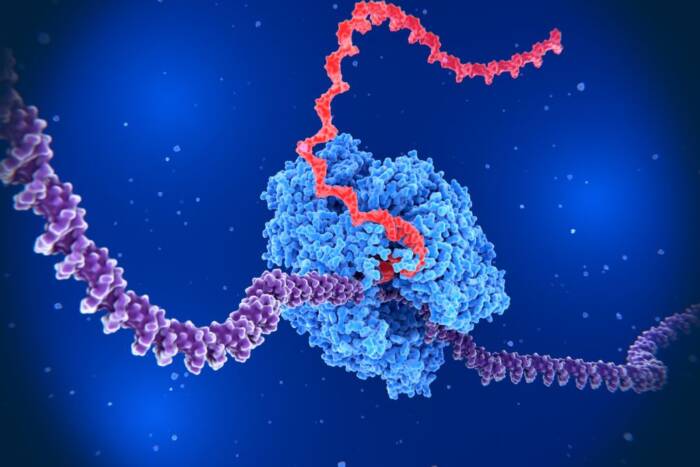Team Led by Rockefeller University Researcher Develops New Drug to Control Infant Jaundice
New Therapy Could Have Worldwide Impact
A team of researchers led by Dr. A. Kappas of The Rockefeller University has developed a new drug that effectively controls the development of jaundice in preterm newborns. The drug, called SnMP, blocks the production of bilirubin, the yellow pigment that leads to severe jaundice when it builds up in the blood faster than the liver can process it.
The results, published in the January 10 issue of Pediatrics, could soon lead to a simple, safe, rapidly effective and inexpensive therapy to curb neonatal jaundice, the most commonly treated medical condition in preterm and fullterm newborns which predisposes these infants to potentially serious central nervous system damage.
“We are pleased that it has been possible to demonstrate how effectively hyperbilirubinemia (jaundice) in newborns can be managed by inhibiting, shortly after birth, the enzyme which controls bilirubin production,” said Dr. Kappas, Physician-in-Chief Emeritus and currently Sherman M. Fairchild Professor at The Rockefeller University Hospital.
Neonatal hyperbilirubinemia, which can lead to brain damage if not rapidly controlled, is most commonly treated after the yellow pigment, bilirubin, reaches high levels in the bloodstream and tissues. The usual treatment is several days of intensive exposure to special lights, known as phototherapy, which involves an extended hospital stay and separation of the infant from the mother. In many cases the condition is unrecognized and goes untreated. It is especially prevalent and severe in premature infants and in babies born in economically deprived circumstances; in settings where good prenatal and postnatal care for newborns is not available; and in cases where newborns undergo a variety of medical complications after birth.
Dr. Kappas and Dr. George S. Drummond, a professor at Rockefeller who developed the new drug with Dr. Kappas, emphasized that the new treatment approach is based on the principle of interdicting bilirubin production shortly after birth before threatening levels of this toxic pigment are reached in the bloodstream. The principal current treatment, phototherapy, attempts to control newborn jaundice after bilirubin levels reach, or approach, blood levels which pediatricians consider potentially dangerous. The new findings suggest that a preventive approach may be best in managing hyperbilirubinemia of the newborn, greatly reducing the need for phototherapy and its attendant problems. Preventive administration of the new drug would be especially valuable in underdeveloped areas of the world and countries where sophisticated medical equipment is not available.
Even in developed nations such as the United States, SnMP could provide a simple, inexpensive and more desirable therapy. Of the roughly 4 million births in the United States each year, about 75 percent or two and a half million infants develop visible jaundice. In about 10 percent of these infants, jaundice becomes severe enough to warrant treatment with light to prevent potential damage to the central nervous system.
The new drug, called Sn-mesoporphyrin (SnMP) is a synthetic chemical relative of heme, the iron-containing pigment in red blood cells. Instead of iron, the SnMP molecule contains tin; hence the chemical symbol for tin, Sn.
During a four-year period, the researchers evaluated 517 preterm newborns in stable upper and middle class families at the leading maternity center in Athens, Greece, the Metera Maternity Hospital. They chose preterm babies because jaundice is common in babies born prematurely. SnMP, administered in a single, small dose shortly after birth substantially reduced bilirubin levels and markedly diminished the requirement for phototherapy in treated infants.
The findings of the research group have since been extended to fullterm babies. The latest results show that when given to fullterm newborns with jaundice for whom neonatologists would ordinarily prescribe a course of phototherapy, a single dose of SnMP completely eliminated the need for light treatment. The new drug thus alleviates a cause of both medical and parental concern and saves much expense and inconvenience.
Besides Drs. Kappas and Drummond of The Rockefeller University, a key member of the research team was Dr. Timos Valaes, Professor of Pediatrics at Tufts University School of Medicine, who supervised the clinical trials at the Metera Hospital in Athens, Greece. Dr. Sophia Petmezaki, Director of the Special Care Nursery at the Metera Maternity Hospital and Professor Claudia Henschke, Cornell University Medical College, were collaborators in the study.
The studies carried out by the group were supported principally by the National Institute of Child Health and Human Development, National Institutes of Health. Private support for this program was also provided by the Dyson Foundation and the Ablon, Lang, Kimmelman Renfield and Singer Foundations. The clinical use of SnMP in these studies was approved by the Food and Drug Administration and the relevant governmental and hospital agencies in Greece and the United States.
The Rockefeller University is a world-renowned center for scientific research and graduate education. It was founded in 1901 by John D. Rockefeller as The Rockefeller Institute for Medical Research, the nation’s first biomedical research center.
In 1910 The Rockefeller University Hospital was established as the first clinical research center in the country. The hospital pioneered a new kind of medical research in the United States. Rather than serving simply as a testing site for ideas generated in the lab, physicians were free to pursue experiments on the fundamental roots of disease.
Over the last eight decades, the pioneering research that has come out of The Rockefeller University Hospital has included the discovery that genetic material is made of DNA–considered by many to be the single most important biological discovery of the 20th century–the isolation and testing of natural antibodies, the identification of genetic defects associated with atherosclerosis, and the development of a highly effective meningitis vaccine now used worldwide. Currently under investigation at the hospital are genetic disorders, skin disease, and infectious diseases such as AIDS and tuberculosis, as well as chronic problems such as atherosclerosis and heart disease, obesity, narcotics addiction and metabolic problems of many types.


